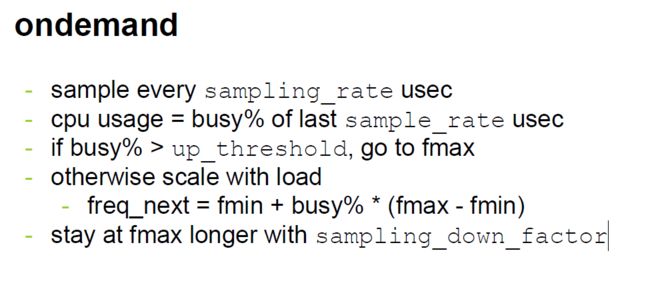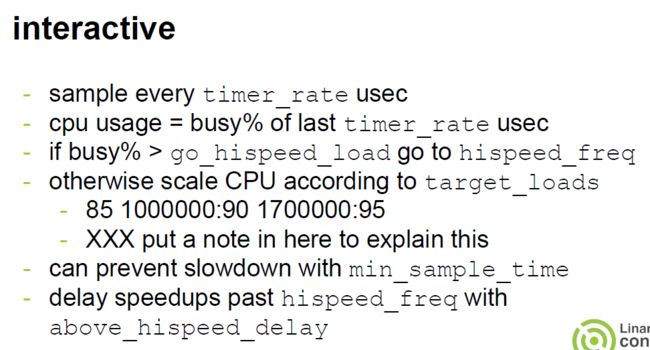【DNN量化工具】QKeras 工具简介
kanhao100
笔记dnn人工智能神经网络
QKeras工具简介QKeras是一个用于量化深度学习模型的Keras扩展库,旨在使深度学习模型的量化(即将模型的浮点权重转换为低精度格式)变得简单而高效。QKeras主要目标是优化模型的存储和推理速度,特别适用于需要在资源受限的设备(如移动设备和嵌入式系统)上运行深度学习模型的场景。QKeras的主要特点量化支持:QKeras提供了对不同类型量化的支持,包括权重量化和激活量化。用户可以根据需求选
CSP-J备考冲刺必刷题(C++) | AcWing 11 背包问题求方案数
热爱编程的通信人
c++算法开发语言
本文分享的必刷题目是从蓝桥云课、洛谷、AcWing等知名刷题平台精心挑选而来,并结合各平台提供的算法标签和难度等级进行了系统分类。题目涵盖了从基础到进阶的多种算法和数据结构,旨在为不同阶段的编程学习者提供一条清晰、平稳的学习提升路径。欢迎大家订阅我的专栏:算法题解:C++与Python实现!附上汇总贴:算法竞赛备考冲刺必刷题(C++)|汇总【题目来源】AcWing:11.背包问题求方案数-AcWi
【nnUnetv2】Code复现
是Winky啊
#项目nnUnet人工智能深度学习
作者提出一种nnUNet(no-new-Net)框架,基于原始的UNet(很小的修改),不去采用哪些新的结构,如相残差连接、dense连接、注意力机制等花里胡哨的东西。相反的,把重心放在:预处理(resampling和normalization)、训练(loss,optimizer设置、数据增广)、推理(patch-based策略、test-time-augmentations集成和模型集成等)、
3分钟带你了解Vue3的nextTick()
嫣嫣细语
vue.js前端javascriptvue.jsjavascript前端
前言Vue实现响应式并不是数据发生变化之后DOM立即变化,而是按一定的策略进行DOM的更新。简单来说,Vue在修改数据后,视图不会立刻更新,而是等同一事件循环中的所有数据变化完成之后,再统一进行视图更新,nextTick()方法就会在这样的DOM更新循环结束后调用指定的函数。概念在Vue3中nextTick()方法的行为和Vue2中基本相似,但它进行了一些优化,以提高性能和稳定性。nextTick
时间序列分析的军火库:AutoTS、Darts、Kats、PaddleTS、tfts 和 FancyTS解析
赛卡
大数据人工智能深度学习python概率论数学建模
引言:时间序列分析的现代挑战时间序列分析在多个领域中扮演着关键角色,包括工程、金融、气象、工业预测等。随着开源工具的快速发展,开发者可以通过多种库快速实现时间序列预测与分析。本文将对AutoTS、Darts、Kats、PaddleTS、tfts和FancyTS六大主流库进行详细解析,并提供代码示例,帮助你根据实际需求选择最佳工具。核心库技术解析与场景化实践1.AutoTS:自动化时间序列预测技术亮
自动驾驶中间件技术辨析:ROS、Apex.Grace、DDS、AutoSAR和AutoSAR Adaptive
赛卡
自动驾驶中间件人工智能
在自动驾驶技术的演进中,中间件作为连接硬件、操作系统与应用软件的核心枢纽,其安全性、实时性和可扩展性至关重要。当前市场上主流的中间件技术包括ROS/ROS2、Apex.Grace(Apex.OS)、DDS、AutoSAR(经典平台CP)和AutoSARAdaptive(自适应平台AP)。这些技术各有特点,但也存在交叉与互补。本文将从功能定位、技术架构、安全认证和应用场景等方面,深入分析它们的联系与
【Q&A】Qt中直接渲染和离屏渲染效率哪个高?
浅慕Antonio
Q&Aqt信息可视化开发语言
直接渲染和离屏渲染的效率取决于具体场景和实现方式,以下是详细对比分析:一、直接渲染(On-screenRendering)原理直接将图形数据绘制到屏幕缓冲区(BackBuffer),完成后通过交换缓冲区显示到屏幕。通常在paintEvent等事件中通过QPainter直接绘制。优势减少数据复制:无需额外的缓冲区传输,直接写入屏幕缓冲区。实时性高:适合需要快速更新的场景(如动画、实时数据可视化)。简
ssh命令
满分对我强制爱
linux服务器运维spark
ssh命令无需密码也可登录要先关闭防火墙,命令如下:systemctlstopfirewalldsystemctldisablefirewalldsystemctlstatusfirewalldeg:目标:hadoop100通过ssh访问hadoop101,hadoop102时不需要密码,其他两台设备也类似。具体操作如下:1.在hadoop100中生成公钥和密码。ssh-keygen-trsa三次
数组模拟邻接表 #图论
旧物有情
数据结构图论数据结构
文章目录为什么要用数组来模拟邻接表存储思路遍历思路树是特殊的图,因此邻接表可以存储图和树两种数据结构。为什么要用数组来模拟邻接表在算法设计当中,利用数组来代替结构体模拟各种数据结构会更加简单。存储思路给定如下数据,我们可以构造如下的一个邻接表请看代码/**idx:索引,代表数组哪个位置,是否连续不重要,因为我们的存储是链式的。h[idx]:顶点表,下标idx代表是哪个顶点,初始值全部为-1,代表没
软件工程:数据字典
愚戏师
软件工程软件工程数据库
一、数据字典的核心作用定位:数据字典是数据流图(DFD)的补充说明文档,与DFD共同构成系统的逻辑模型。核心价值:消除二义性:明确数据流、存储、元素的定义,避免理解偏差。设计依据:为数据库设计、代码开发提供数据规范。团队协作:作为开发团队的共享词汇表,确保术语一致性。二、数据字典的四大组成要素1.数据流(DataFlow)定义:数据在系统中的流动路径。描述内容:来源与去向:起点(外部实体/处理)、
Softmax温度调节与注意力缩放:深度神经网络中的平滑艺术
Mark White
dnn人工智能神经网络
Softmax温度调节与注意力缩放:深度神经网络中的平滑艺术在深度学习的精密机械中,有些细微的调整机制往往被视为理所当然,却实际上蕴含着深刻的数学洞察和巧妙的工程智慧。今天,我们将探讨两个看似独立却本质相通的机制:生成模型中的温度参数与Transformer注意力机制中的缩放因子。这两个设计都围绕着同一个核心概念——softmax分布的平滑控制。Softmax函数:概率分布的催化剂在深入讨论之前,
弱网测试究竟要怎么做,才能防止漏测?
学掌门
IT软件测试程序员软件测试软件测试工程师
1、为什么要进行弱网测试?在游戏测试–黑盒测试中,分为功能测试与专项测试,在上几篇文章中说的都是功能测试,而专项测试主要包括弱网和性能测试。(其实弱网也是性能的一种。)功能测试主要是保证功能的完整性,能让玩家能够流程的体验整个游戏功能,而弱网测试就是其中需要关注的异常点。首先我们知道现在的网络场景一般是无网络2g3g4g和wifi,以及即将要到来的5g。弱网当然就包括无网、2g,3g不知道算不算,
【轻松学C:编程小白的大冒险】— 09 运算符与表达式的实际应用
秋知叶i
#C语言c语言开发语言
在编程的艺术世界里,代码和灵感需要寻找到最佳的交融点,才能打造出令人为之惊叹的作品。而在这座秋知叶i博客的殿堂里,我们将共同追寻这种完美结合,为未来的世界留下属于我们的独特印记。【轻松学C:编程小白的大冒险】—09运算符与表达式的实际应用一、运算符家族大阅兵二、算术运算符:数学界的五虎上将1.加法运算符`+`2.减法运算符`-`3.乘法运算符`*`4.除法运算符`/`5.取模运算符`%`二、赋值运
用Python实现SFM
薄辉
pythonopencv计算机视觉人工智能图像处理
SFM(结构化光流法)是一种用于解决三维重建问题的方法,它可以根据许多二维图像和它们之间的相对位置,估计出三维场景的深度和摄像机的姿态。在Python中,你可以使用OpenCV库来实现SFM。下面是一个简单的例子,展示了如何使用OpenCV库的cv2.sfm_create函数来实现SFM:importcv2#读入图像,存入列表images中images=[]foriinrange(1,11):im
mysql修改表中所有字段不许为空_如何用SQL语句修改一个表的字段,让它不能为空...
Asama浅间
展开全部ALTERTABLE表ALTERCOLUMN[字段名]字段类型NOTNULLSQL语句1、基32313133353236313431303231363533e78988e69d8331333365643661本介绍:sql语句是对数据库进行操作的一种语言。结构化查询语言(StructuredQueryLanguage)简称SQL,结构化查询语言是一种数据库查询和程序设计语言,用于存取数据以
高级前端面试题-React
圣诞小子
javascript面试
react概念类组件和函数组件,什么时候用类组件获取组件实例类组件如何实现逻辑复用?高阶组件、renderprops选择hooks的优点状态逻辑复用;状态逻辑集中,易于理解;类组件不利于优化,比如不能很好的压缩为什么要用hooks,解决了什么问题同上react的context的使用场景共享对一个组件树全局的信息,不需要一层层传参受控组件和非受控组件非受控组件:数据只保存在内部state中;受控组件
【数据治理】数据湖治理实践:腾讯云数据湖元数据实践指南
菜鸟蜀黍
数据治理大数据
最近数据湖非常的火,但是一旦没弄好,就会变成“数据沼泽”。如何避免“数据湖”变成“数据沼泽”呢?最好的办法就是治理先行。本文的内容主要包括四部分:1、数据湖背景概述,介绍腾讯数据湖的整体架构;2、数据湖统一元数据模块的详细架构实现;3、介绍腾讯云上元数据多租户的设计模式;4、介绍统一元数据的两大核心能力:在线数据目录和离线数据治理的功能。01什么是数据湖随着Snowflake公司股价高歌猛进和各大
GS-SLAM论文阅读笔记-MGSO
zenpluck
GS论文阅读论文阅读笔记
前言MGSO首字母缩略词是直接稀疏里程计(DSO),我们建立的光度SLAM系统和高斯飞溅(GS)的混合。这应该是第一个前端用DSO的高斯SLAM,不知道这个系统的组合能不能打得过ORB-SLAM3,以及对DSO会做出怎么样的改进以适应高斯地图,接下来就看一下吧!GishelloG^s_ihelloGishello我是红色文章目录前言1.背景介绍2.关键内容2.1SLAMmodule2.2Dense
c++ stl库有哪些技术
C++ 老炮儿的技术栈
c++算法学习笔记c++
C++STL(标准模板库)包含以下一些重要技术:容器-序列容器:如vector(动态数组),支持快速随机访问和尾部插入/删除;list(双向链表),适合频繁的插入和删除操作;deque(双端队列),能在两端高效地进行插入和删除。-关联容器:像map(键值对映射),基于红黑树实现,提供快速的查找、插入和删除操作;set(集合),同样基于红黑树,元素唯一且有序。迭代器提供了一种统一的方式来访问容器中的
设计模式之工厂模式的优缺点
C++ 老炮儿的技术栈
算法c++学习笔记
工厂模式是一种创建对象的设计模式,它将对象的创建和使用分离。以下是工厂模式的优缺点:优点-解耦对象的创建和使用:使得代码的依赖关系更加清晰,使用者不需要了解对象的具体创建过程,只需要关心如何使用对象,降低了代码的耦合度。-提高可维护性和可扩展性:当需要创建新的对象或者修改对象的创建逻辑时,只需要在工厂类中进行修改,而不需要在所有使用该对象的地方进行修改,便于代码的维护和扩展。-便于代码复用:工厂类
架构演进的方式
pumpkin84514
架构设计架构
架构演进过程中,常用的三种模式是拆迁者模式、绞杀者模式和修缮者模式。它们代表了三种不同的演进路径,适用于不同的业务环境和技术场景。下面详细解释每种模式的内容、使用场景,并对比它们的差异。1.拆迁者模式内容拆迁者模式(也称为重建模式)是一种彻底重构现有系统的方式。通常,在这种模式下,原有系统被完全放弃,并用一个全新的系统替代。在这种情况下,架构和代码需要从头开始重新设计和实现。使用场景系统老化严重:
jdk tomcat 环境变量配置
Array_06
javajdktomcat
Win7 下如何配置java环境变量
1。准备jdk包,win7系统,tomcat安装包(均上网下载即可)
2。进行对jdk的安装,尽量为默认路径(但要记住啊!!以防以后配置用。。。)
3。分别配置高级环境变量。
电脑-->右击属性-->高级环境变量-->环境变量。
分别配置 :
path
&nbs
Spring调SDK包报java.lang.NoSuchFieldError错误
bijian1013
javaspring
在工作中调另一个系统的SDK包,出现如下java.lang.NoSuchFieldError错误。
org.springframework.web.util.NestedServletException: Handler processing failed; nested exception is java.l
LeetCode[位运算] - #136 数组中的单一数
Cwind
java题解位运算LeetCodeAlgorithm
原题链接:#136 Single Number
要求:
给定一个整型数组,其中除了一个元素之外,每个元素都出现两次。找出这个元素
注意:算法的时间复杂度应为O(n),最好不使用额外的内存空间
难度:中等
分析:
题目限定了线性的时间复杂度,同时不使用额外的空间,即要求只遍历数组一遍得出结果。由于异或运算 n XOR n = 0, n XOR 0 = n,故将数组中的每个元素进
qq登陆界面开发
15700786134
qq
今天我们来开发一个qq登陆界面,首先写一个界面程序,一个界面首先是一个Frame对象,即是一个窗体。然后在这个窗体上放置其他组件。代码如下:
public class First { public void initul(){ jf=ne
Linux的程序包管理器RPM
被触发
linux
在早期我们使用源代码的方式来安装软件时,都需要先把源程序代码编译成可执行的二进制安装程序,然后进行安装。这就意味着每次安装软件都需要经过预处理-->编译-->汇编-->链接-->生成安装文件--> 安装,这个复杂而艰辛的过程。为简化安装步骤,便于广大用户的安装部署程序,程序提供商就在特定的系统上面编译好相关程序的安装文件并进行打包,提供给大家下载,我们只需要根据自己的
socket通信遇到EOFException
肆无忌惮_
EOFException
java.io.EOFException
at java.io.ObjectInputStream$PeekInputStream.readFully(ObjectInputStream.java:2281)
at java.io.ObjectInputStream$BlockDataInputStream.readShort(ObjectInputStream.java:
基于spring的web项目定时操作
知了ing
javaWeb
废话不多说,直接上代码,很简单 配置一下项目启动就行
1,web.xml
<?xml version="1.0" encoding="UTF-8"?>
<web-app xmlns:xsi="http://www.w3.org/2001/XMLSchema-instance"
xmlns="h
树形结构的数据库表Schema设计
矮蛋蛋
schema
原文地址:
http://blog.csdn.net/MONKEY_D_MENG/article/details/6647488
程序设计过程中,我们常常用树形结构来表征某些数据的关联关系,如企业上下级部门、栏目结构、商品分类等等,通常而言,这些树状结构需要借助于数据库完成持久化。然而目前的各种基于关系的数据库,都是以二维表的形式记录存储数据信息,
maven将jar包和源码一起打包到本地仓库
alleni123
maven
http://stackoverflow.com/questions/4031987/how-to-upload-sources-to-local-maven-repository
<project>
...
<build>
<plugins>
<plugin>
<groupI
java IO操作 与 File 获取文件或文件夹的大小,可读,等属性!!!
百合不是茶
类 File
File是指文件和目录路径名的抽象表示形式。
1,何为文件:
标准文件(txt doc mp3...)
目录文件(文件夹)
虚拟内存文件
2,File类中有可以创建文件的 createNewFile()方法,在创建新文件的时候需要try{} catch(){}因为可能会抛出异常;也有可以判断文件是否是一个标准文件的方法isFile();这些防抖都
Spring注入有继承关系的类(2)
bijian1013
javaspring
被注入类的父类有相应的属性,Spring可以直接注入相应的属性,如下所例:1.AClass类
package com.bijian.spring.test4;
public class AClass {
private String a;
private String b;
public String getA() {
retu
30岁转型期你能否成为成功人士
bijian1013
成长励志
很多人由于年轻时走了弯路,到了30岁一事无成,这样的例子大有人在。但同样也有一些人,整个职业生涯都发展得很优秀,到了30岁已经成为职场的精英阶层。由于做猎头的原因,我们接触很多30岁左右的经理人,发现他们在职业发展道路上往往有很多致命的问题。在30岁之前,他们的职业生涯表现很优秀,但从30岁到40岁这一段,很多人
【Velocity四】Velocity与Java互操作
bit1129
velocity
Velocity出现的目的用于简化基于MVC的web应用开发,用于替代JSP标签技术,那么Velocity如何访问Java代码.本篇继续以Velocity三http://bit1129.iteye.com/blog/2106142中的例子为基础,
POJO
package com.tom.servlets;
public
【Hive十一】Hive数据倾斜优化
bit1129
hive
什么是Hive数据倾斜问题
操作:join,group by,count distinct
现象:任务进度长时间维持在99%(或100%),查看任务监控页面,发现只有少量(1个或几个)reduce子任务未完成;查看未完成的子任务,可以看到本地读写数据量积累非常大,通常超过10GB可以认定为发生数据倾斜。
原因:key分布不均匀
倾斜度衡量:平均记录数超过50w且
在nginx中集成lua脚本:添加自定义Http头,封IP等
ronin47
nginx lua csrf
Lua是一个可以嵌入到Nginx配置文件中的动态脚本语言,从而可以在Nginx请求处理的任何阶段执行各种Lua代码。刚开始我们只是用Lua 把请求路由到后端服务器,但是它对我们架构的作用超出了我们的预期。下面就讲讲我们所做的工作。 强制搜索引擎只索引mixlr.com
Google把子域名当作完全独立的网站,我们不希望爬虫抓取子域名的页面,降低我们的Page rank。
location /{
java-3.求子数组的最大和
bylijinnan
java
package beautyOfCoding;
public class MaxSubArraySum {
/**
* 3.求子数组的最大和
题目描述:
输入一个整形数组,数组里有正数也有负数。
数组中连续的一个或多个整数组成一个子数组,每个子数组都有一个和。
求所有子数组的和的最大值。要求时间复杂度为O(n)。
例如输入的数组为1, -2, 3, 10, -4,
Netty源码学习-FileRegion
bylijinnan
javanetty
今天看org.jboss.netty.example.http.file.HttpStaticFileServerHandler.java
可以直接往channel里面写入一个FileRegion对象,而不需要相应的encoder:
//pipeline(没有诸如“FileRegionEncoder”的handler):
public ChannelPipeline ge
使用ZeroClipboard解决跨浏览器复制到剪贴板的问题
cngolon
跨浏览器复制到粘贴板Zero Clipboard
Zero Clipboard的实现原理
Zero Clipboard 利用透明的Flash让其漂浮在复制按钮之上,这样其实点击的不是按钮而是 Flash ,这样将需要的内容传入Flash,再通过Flash的复制功能把传入的内容复制到剪贴板。
Zero Clipboard的安装方法
首先需要下载 Zero Clipboard的压缩包,解压后把文件夹中两个文件:ZeroClipboard.js
单例模式
cuishikuan
单例模式
第一种(懒汉,线程不安全):
public class Singleton { 2 private static Singleton instance; 3 pri
spring+websocket的使用
dalan_123
一、spring配置文件
<?xml version="1.0" encoding="UTF-8"?><beans xmlns="http://www.springframework.org/schema/beans" xmlns:xsi="http://www.w3.or
细节问题:ZEROFILL的用法范围。
dcj3sjt126com
mysql
1、zerofill把月份中的一位数字比如1,2,3等加前导0
mysql> CREATE TABLE t1 (year YEAR(4), month INT(2) UNSIGNED ZEROFILL, -> day
Android开发10——Activity的跳转与传值
dcj3sjt126com
Android开发
Activity跳转与传值,主要是通过Intent类,Intent的作用是激活组件和附带数据。
一、Activity跳转
方法一Intent intent = new Intent(A.this, B.class); startActivity(intent)
方法二Intent intent = new Intent();intent.setCla
jdbc 得到表结构、主键
eksliang
jdbc 得到表结构、主键
转自博客:http://blog.csdn.net/ocean1010/article/details/7266042
假设有个con DatabaseMetaData dbmd = con.getMetaData(); rs = dbmd.getColumns(con.getCatalog(), schema, tableName, null); rs.getSt
Android 应用程序开关GPS
gqdy365
android
要在应用程序中操作GPS开关需要权限:
<uses-permission android:name="android.permission.WRITE_SECURE_SETTINGS" />
但在配置文件中添加此权限之后会报错,无法再eclipse里面正常编译,怎么办?
1、方法一:将项目放到Android源码中编译;
2、方法二:网上有人说cl
Windows上调试MapReduce
zhiquanliu
mapreduce
1.下载hadoop2x-eclipse-plugin https://github.com/winghc/hadoop2x-eclipse-plugin.git 把 hadoop2.6.0-eclipse-plugin.jar 放到eclipse plugin 目录中。 2.下载 hadoop2.6_x64_.zip http://dl.iteye.com/topics/download/d2b
如何看待一些知名博客推广软文的行为?
justjavac
博客
本文来自我在知乎上的一个回答:http://www.zhihu.com/question/23431810/answer/24588621
互联网上的两种典型心态:
当初求种像条狗,如今撸完嫌人丑
当初搜贴像条犬,如今读完嫌人软
你为啥感觉不舒服呢?
难道非得要作者把自己的劳动成果免费给你用,你才舒服?
就如同 Google 关闭了 Gooled Reader,那是
sql优化总结
macroli
sql
为了是自己对sql优化有更好的原则性,在这里做一下总结,个人原则如有不对请多多指教。谢谢!
要知道一个简单的sql语句执行效率,就要有查看方式,一遍更好的进行优化。
一、简单的统计语句执行时间
declare @d datetime ---定义一个datetime的变量set @d=getdate() ---获取查询语句开始前的时间select user_id
Linux Oracle中常遇到的一些问题及命令总结
超声波
oraclelinux
1.linux更改主机名
(1)#hostname oracledb 临时修改主机名
(2) vi /etc/sysconfig/network 修改hostname
(3) vi /etc/hosts 修改IP对应的主机名
2.linux重启oracle实例及监听的各种方法
(注意操作的顺序应该是先监听,后数据库实例)
&nbs
hive函数大全及使用示例
superlxw1234
hadoophive函数
具体说明及示例参 见附件文档。
文档目录:
目录
一、关系运算: 4
1. 等值比较: = 4
2. 不等值比较: <> 4
3. 小于比较: < 4
4. 小于等于比较: <= 4
5. 大于比较: > 5
6. 大于等于比较: >= 5
7. 空值判断: IS NULL 5
Spring 4.2新特性-使用@Order调整配置类加载顺序
wiselyman
spring 4
4.1 @Order
Spring 4.2 利用@Order控制配置类的加载顺序
4.2 演示
两个演示bean
package com.wisely.spring4_2.order;
public class Demo1Service {
}
package com.wisely.spring4_2.order;
public class


